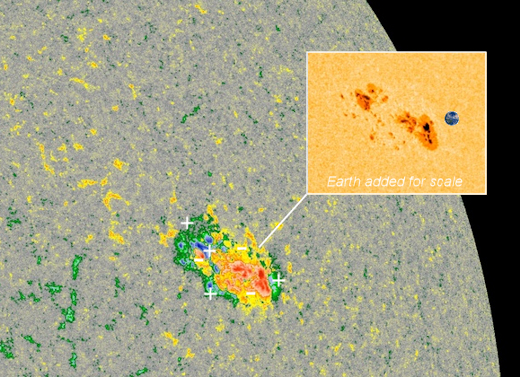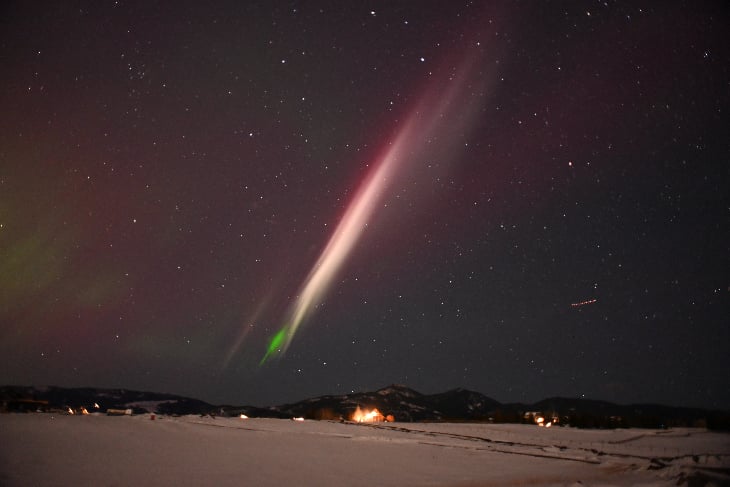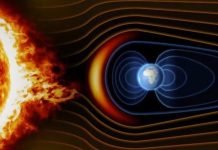That’s a big sunspot!Two days ago, sunspot AR2736 didn’t exist. Now the rapidly-growing active region stretches across more than 100,000 km of the solar surface and contains multiple dark cores larger than Earth.
Moreover, it has a complicated magnetic field that is crackling with C-class solar flares. The sunspot is inset in this magnetic map of the sun from NASA’s Solar Dynamics Observatory:

Sunspots are islands of magnetism floating on the surface of the sun. Most sunspots, like most magnets, have two poles + (N) and – (S). Sunspot AR2736, however, has multiple poles with areas of + and – jostling against one another. This is why the sunspot is crackling with flares. Magnetic field lines of opposing polarity criss-cross and explode – a process known as magnetic reconnection.
Solar minimum is underway
In the grand scheme of space weather, C-class solar flares are not considered to be major events. However, these explosions are noteworthy because the sun has recently been so quiet. Solar Minimum is underway. In context, C-flares represent a real uptick in solar activity. They can ionize the top of Earth’s atmosphere, disturb shortwave radio communications, and even hurl CMEs toward Earth.
Indeed, one is heading our way now. Stay tuned.
C4-class solar flare
Indeed, northern spring began with a bang. On March 20th at 1118 UT, new sunspot AR2736 exploded, producing a C4-class solar flare that lasted more than an hour. The sunspot is inset in this image of the flare’s extreme ultraviolet flash:

The explosion sent minor waves of ionization rippling through Earth’s upper atmosphere and caused a shortwave radio “brownout” over southern parts of Europe and all of Africa. Anomalies in radio propagation at frequencies below 20 MHz might have been noticed by, e.g., mariners and ham radio operators.
The explosion also hurled a coronal mass ejection (CME) into space. NASA’s STEREO-A spacecraft saw the cloud racing away from the sun:

Additional images from the Solar and Heliospheric Observatory (SOHO) confirm that the CME is heading for Earth. While the bulk of the cloud appears set to miss our planet, the flanks of the CME should deliver a glancing blow. Estimated time of arrival: Late on March 22nd or sometime on March 23rd. NOAA forecasters favor the March 23rd estimate. Either way, moderate G2 geomagnetic storms are possible when the CME arrives.
Keep your eyes to the sky and look for northern lights!
Follow us on FACEBOOK and TWITTER. Share your thoughts in our DISCUSSION FORUMS. Donate through Paypal. Please and thank you
[Spaceweather, Spaceweatherarchive]











